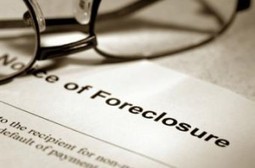The main reason for the increase in foreclosure risk while the homeownership rate remains little changed is leverage, according to economist Sam Khater.
Source: www.dsnews.com
The relationship of leverage to residential foreclosures revealed four main findings:
1) Foreclosure risk is two to three times higher than it was 50 years ago despite homeownership rates being close to their 1960s levels;
2) leverage has been a primary driver of foreclosures during the last 50 years, and that the strong role of leverage has rendered savings and income changes insignificant drivers of default;
3) high inflation rates in the 1970s and 1980s propelled nominal home prices, resulting in reduced aggregate LTV and lowering default risk – thus stabilizing foreclosures during those decades; and
4) government regulations aimed at making the mortgage market safer for consumers center on an income-based ATR rule that manage the risk of delinquency, but are not so much focused on foreclosure risk.
“Therefore, leverage as the most important driver of foreclosure performance over the last five decades remains unaddressed for the market,” Khater wrote. “In the future, policy makers may need to consider exploring their ability to manage the leverage cycle to promote residential financial stability.”

